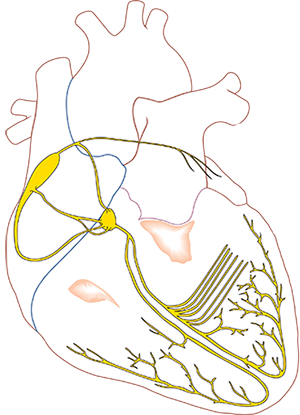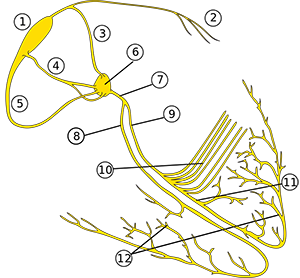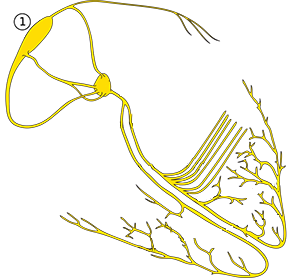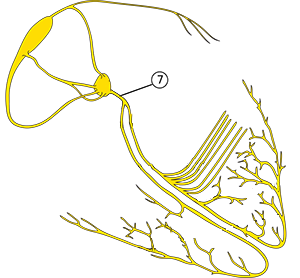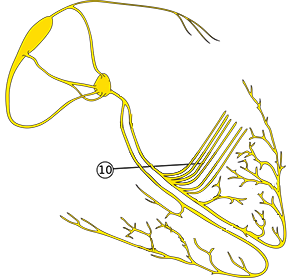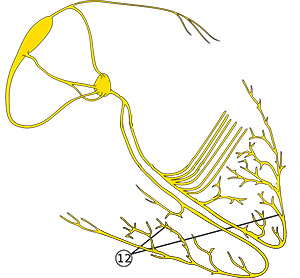Internodal Pathways (3, 4, 5)
- SA node and AV node are connected by 3 internodal pathways:
- Anterolateral Internodal Pathway (James' Bundle) (3)
- Middle Internodal Pathway (Wenckebach's Bundle) (4)
- Posterior Internodal Pathway (Thorel's Bundle) (5)
- Typically, only 1 pathway is connected to the AV node
- The other 2 pathways end before the AV node in the atrium
- Only 10% of the population has 2 pathways connected to the AV node
- If 2 pathways enter the AV node, then
- one is faster and the other is slower
- The AV node is activated always via the faster pathway
- The impulse from the faster pathway resets the impulse from the slower pathway
- (refractory period of the action potential)
|

|



